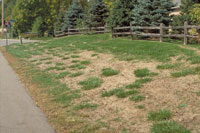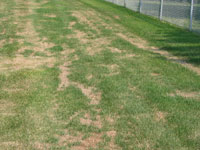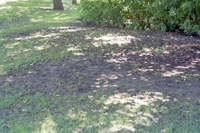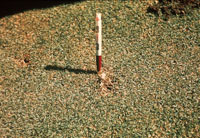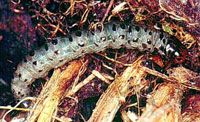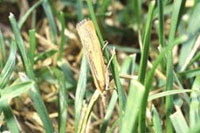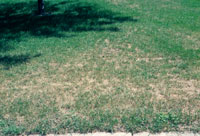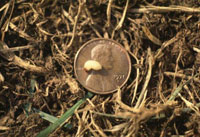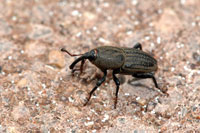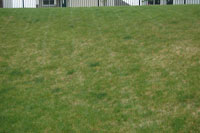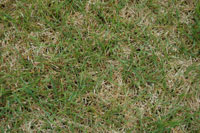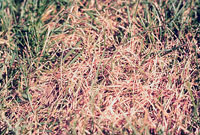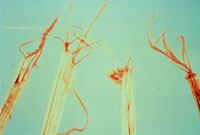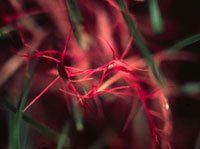Extension > Garden > Diagnose a problem > What's wrong with my plant? > Turf > Irregular patches > Other
Turf > Irregular patches > Other
1 of 6
Heat and drought stress
- Occurs when temperatures are high (greater than 85° F) and little or no moisture is available through rain or irrigation for at least 2 to 3 weeks
- General browning of entire turf grass area; may also look thin and dry
- Affected areas may have clumps or tufts of green grass within areas of tan dry grass
- Occurs often in sunny, exposed lawn areas but can occur in dry, shady areas as well
- In most cases, cool season grasses will turn green and resume growth once cooler conditions and more frequent rainfall return
- If heat and drought stress have been severe for several weeks, affected lawn areas may not recover or may only partially recover
2 of 6
Shaded areas
- Turfgrass stand sparse with varying amounts of soil surface exposed
- Generally grass blades are thinner and of paler color compared to sunny areas
- Powdery mildew as evidenced by a white 'powder-like' material commonly present on grass blades
- Sparseness of the lawn worse near trunk of tree, closer to a north wall, or in other heavily shaded areas; may be no grass at all in these areas
3 of 6
Sod Webworm
- Symptoms first appear late spring and mid to late summer as small (size of a quarter) ragged brown areas
- Damaged areas can become larger and coalesce with each other
- Adult moth is 1/2 to 3/4 inch long, buff-colored with snout, active spring and mid-summer
- Larvae are 3/4 to 1 inch long full grown, brownish to grayish with black spots, active late spring and mid to late summer
- More information on Sod Webworm
4 of 6
Bluegrass Billbug
- Damage most commonly seen during July and August
- Damaged areas yellow, then turning brown or straw-colored in small, irregular patches
- Particularly common near sidewalks, driveways, and other sources of heat
- 1/4 inch long, gray to black beetle with long, curved snout, active spring and late summer
- More information on Bluegrass Billbug
5 of 6
Cutworm
- Grass blades clipped in spring (sometimes later in summer)
- Scattered areas of thinning and/or browning grass, which can grow larger
- Dark-colored caterpillars up to 1 1/2 to 2 inches long
- More information on Cutworm
6 of 6
Red Thread
Laetisaria fuciformis
- Irregular to round patches of tan grass 2 to 24 inches wide
- Grass blades die and turn tan from the tip down and are often mixed with healthy grass blades
- In humid weather, clumps of pink cotton candy-like fungal growth can be seen on infected patches of grass
- Hard pink to red thread shaped fungal structures emerge from the tip of infected grass blades
- Common in cool, wet weather and N-deficient grass




